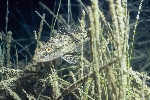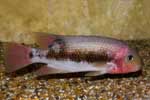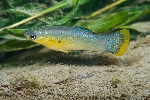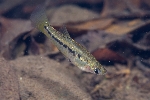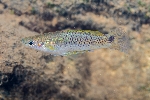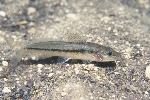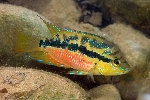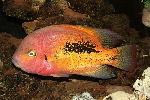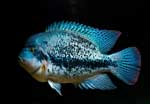Ictiofauna de la Selva Zoque de Santa María Chimalapa, Oaxaca, México
By López-Segovia, Eduardo, Luis Fernando Del Moral-Flores, Tao Hernández-Arellano
Hydrobiologia, 30(2):107-116 Aug-2020
" The Zoque rainforest Chimalapas is located in the Isthmus of Tehuantepec, mainly in the municipalities of San Miguel Chimalapa and Santa María Chimalapa in the state of Oaxaca, is considered one of the latest well-preserved regions in Mexico, as well as a center of diversity and endemism of flora and fauna. Objective. Develop inventories of the ichthyofauna from Santa María Chimalapa rainforest to catalog resources before imminent environmental and human alterations. Methods. Samples were collected using several types of fishing gears in the main rivers and tributaries of the water system. Results. A total of 2,430 fish were collected, corresponding to 38 species, grouped in 31 genera, 19 families, and 12 orders. The families with the greatest species richness were Cichlidae and Poeciliidae with nine and six. Priapella intermedia was the most abundant (30.1% total), followed by Astyanax finitimus (13.3%) and Pseudoxiohophorus bimaculatus (10.3%). Regarding biogeographical aspects of the fish community, a prevalence of neotropical species (91.9%) was observed, two species of Nearctic origin (Ictalurus meridionalis and Ictiobus meridionalis) and four vicarious species (Atherinella sallei, Cathorops cf. kailolae, Eugerres mexicanus, Strongylura hubbsi). 31 species are being evaluated in some risk categories and two are exotic. Conclusions. The ichthyofauna of Santa María Chimalapa holds similarities to that of the aquatic bodies present in rainforests of southern Mexico. However, ecological, conservation and anthropogenic impact studies are necessary to establish sustainable conservation strategies "
Classification: Distribution and exploration.
Language: Spanish
Reference in bibliography for species (31)
Name substitutions
- Agonostomus monticola referred to as Dajaus monticola.
- Diapterus mexicanus referred to as Eugerres mexicanus.
- Pomadasys crocro referred to as Rhonciscus crocro.
- Profundulus labialis referred to as Tlaloc labialis.
- Profundulus punctatus referred to as Profundulus aff. punctatus.
López-Segovia, Eduardo & Luis Fernando Del Moral-Flores, Tao Hernández-Arellano. 2020. "Ictiofauna de la Selva Zoque de Santa María Chimalapa, Oaxaca, México". Hydrobiologia. 30(2):107-116 (ffm01002) (abstract)






